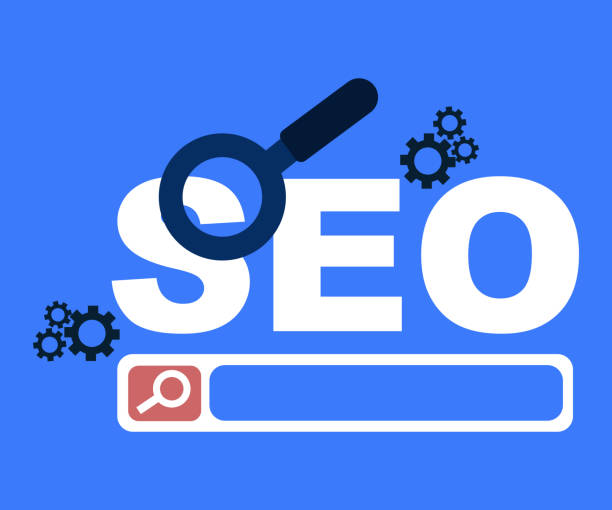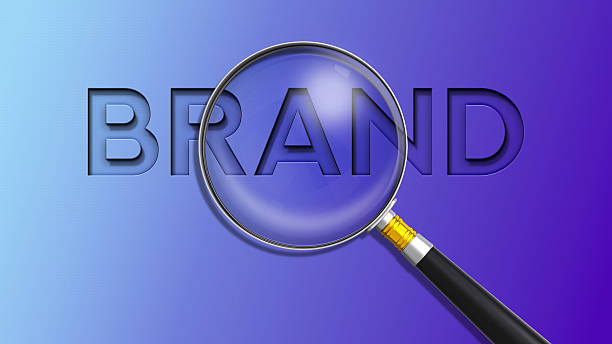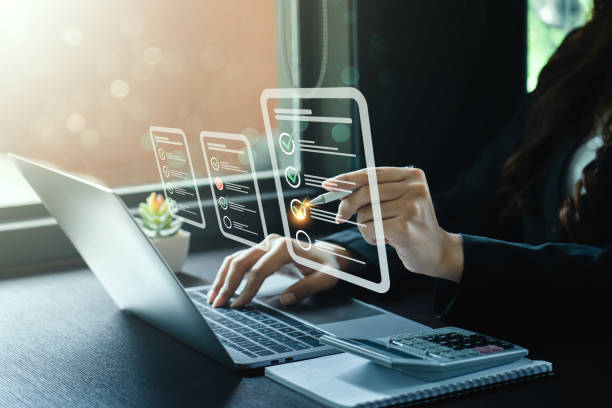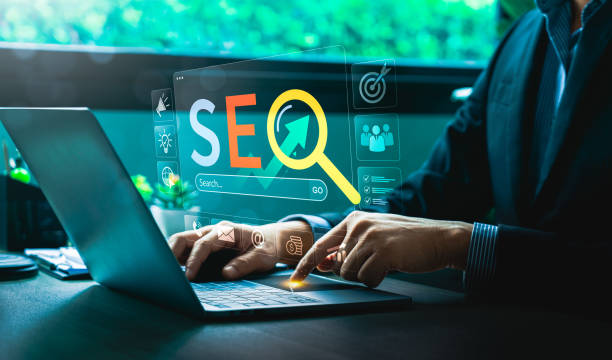What is Internal SEO and Why is it Important?

#Internal SEO, also known as On-Page SEO, is a set of actions you take within your website to improve your site’s ranking in Google search results and other search engines.
These actions include optimizing content, site structure, HTML tags, and other internal elements of the website.
The importance of internal SEO stems from the fact that search engines use these elements to better understand the content of your site and its relevance to users’ searches.
If your website is not properly optimized for internal SEO, even with the best content, you may not be seen in search results.
SEO is not just about external link building, but internal optimization also plays a very important role in the success of your website.
Therefore, internal SEO is one of the most basic and important parts of any SEO strategy.
Are you bothered by losing customers who visit your site to buy?
Rasaweb is your specialized solution for having a successful online store.
✅ Significantly increase your online sales
✅ Build trust and professional branding with customers⚡ Get free advice from Rasaweb experts!
Keyword Research: The Foundation for Successful Internal SEO

Keyword research is the first and most crucial step in any internal SEO strategy.
You need to identify the keywords that users use to search for products, services, or information related to your business.
These keywords should be relevant, high-search volume, and low-competition.
There are various tools available for keyword research, including Ahrefs, Moz Keyword Explorer, and Ubersuggest.
After finding the appropriate keywords, you should strategically use them in your site’s content, page titles, meta descriptions, and HTML tags.
Remember that overuse of keywords (keyword stuffing) can backfire and be penalized by search engines.
Principled internal SEO dictates that keywords should be used naturally and in related text.
Content Optimization: Producing High-Quality and Engaging Content

High-quality and engaging content is the heart of internal SEO.
Search engines love content that is valuable and useful to users.
Your content should be relevant to the target keywords, unique, comprehensive, and readable.
Use images, videos, and infographics to make your content more appealing.
Structure your content using headings (H1-H6) and subheadings to make it easier to read.
Also, update your content regularly to let search engines know that your site is active and relevant.
Internal SEO depends on producing valuable and useful content.
Remember, content is king, and internal SEO serves it.
Attract users and increase your site’s ranking with appropriate content.
| Element | Description | Importance in Internal SEO |
|---|---|---|
| Page Title (Title Tag) | The page title that appears in search results. | Very High |
| Meta Description | A brief description of the page that appears below the title in search results. | High |
| Headings (H1-H6) | Headings and subheadings for structuring content. | Medium |
| Image Alt Text | Description of images for search engines and users. | Medium |
HTML Tag Optimization: Title, Meta Description, and Heading Tags

HTML tags play an important role in internal SEO.
The Title Tag specifies the page title and is displayed in search results.
The Meta Description tag provides a brief description of the page content and is displayed below the title in search results.
Heading tags (H1-H6) are used to structure content and highlight headings and subheadings.
Make sure these tags contain your target keywords and accurately describe the content of the page.
Also, keep the length of the title and meta description within the recommended range (50-60 and 150-160 characters, respectively) to ensure they are fully displayed in search results.
Internal SEO requires attention to detail, and optimizing HTML tags is one of these important details.
Are you tired of your company’s website not being seen as it should be, and losing potential customers? Solve this problem forever with professional and effective website design by Rasaweb!
✅ Increase brand credibility and build customer trust
✅ Attract targeted sales leads
⚡ Contact us now for a free consultation!
URL Structure: Creating Friendly and Optimized URLs

Your website’s URL structure can also affect internal SEO.
Friendly and optimized URLs are URLs that are readable, relevant, and contain keywords.
Avoid using long, complex URLs with incomprehensible characters.
For example, instead of `example.com/page?id=123` use `example.com/seo-internal`.
Also, use a logical category structure for your URLs so that users and search engines can easily navigate your site.
A proper URL structure is an important factor in internal SEO that is often overlooked.
Site Speed: Improving Page Load Speed

Page load speed is an important factor in Google rankings.
Users expect web pages to load in a few seconds, and if your site is slow, users are more likely to leave.
To improve your site speed, you can use various methods such as optimizing images, compressing files, using a CDN (Content Delivery Network), and choosing quality hosting.
There are various tools such as Google PageSpeed Insights to measure site speed and provide suggestions for improvement.
Internal SEO is not just limited to content, but also emphasizes user experience, and site speed is a key factor in user experience.
Image Optimization: Using Alt Text

Images play an important role in the appeal and better understanding of website content.
However, search engines cannot directly understand images.
To enable search engines to understand your images, you must use Alt Text.
Alt Text provides a brief description of the image content and is displayed to users if the image fails to load.
Make sure your Alt Text is relevant to the image and contains your target keywords.
Also, optimize the size of your images to increase page load speed.
Internal SEO includes optimizing all elements of the site, including images.
| Optimization Element | Description | Impact on Internal SEO |
|---|---|---|
| Image Filename | Using a descriptive filename that is relevant to the image content (e.g., seo-internal-website.jpg) | Medium |
| Alt Text | Brief description that is relevant to the image content (e.g., website internal SEO) | High |
| Image Size | Reduce image size without losing quality to improve page load speed | High |
Internal Linking: Creating a Logical Linking Structure

Internal linking means creating links between different pages of your website.
Internal linking helps search engines better understand your site structure and helps users easily navigate your site.
Make sure your internal links are relevant and meaningful, and use your target keywords in the link text (Anchor Text).
For example, if you are writing an article about internal SEO, you can link to other related articles on your site.
Internal SEO also includes optimizing internal links.
Do visitors to your online store leave before making a purchase? Don’t worry anymore! With Rasaweb’s professional online store design services, solve the problem of not converting visitors into customers forever!
✅ Significant increase in conversion rate and sales
✅ Unparalleled and engaging user experience
⚡ Contact us now for a free consultation!
Responsive Design: Optimizing the Site for Mobile

Today, most users access the internet through mobile devices.
Therefore, it is important that your website is optimized for mobile.
Responsive design means that your website automatically adapts to the screen size of different devices.
Google also prioritizes mobile-friendly websites.
To make sure your site is mobile-optimized, you can use Google’s Mobile-Friendly Test tool.
In today’s world, internal SEO is meaningless without mobile optimization. Internal SEO means optimizing the site for mobile
Continuous Analysis and Improvement: Tracking Results and Updating Strategy

Internal SEO is an ongoing process, and you should regularly analyze the results of your efforts and update your strategy accordingly.
There are various tools such as Google Analytics and Google Search Console to track site traffic, keyword rankings, and other important metrics.
Using these tools, you can identify the strengths and weaknesses of your internal SEO and take the necessary steps to improve it.
Remember that internal SEO is a journey, not a destination, and you should always be learning and improving.
Continuous and sustainable internal SEO is the key to success in the online world.
Take internal SEO seriously.
Frequently Asked Questions
| Question | Answer |
|---|---|
| What is internal SEO (On-page SEO)? | Internal SEO refers to a set of actions that are performed within your website to improve its ranking in search engine results. This includes optimizing content, site structure, and HTML code. |
| Why is internal SEO important? | Internal SEO helps search engines understand the content of your page and determine whether your content is relevant to searchers. It is the foundation of any successful SEO strategy. |
| What are the key elements of internal SEO? | Page title (Title Tag), meta descriptions (Meta Description), use of keywords, image optimization, heading structure (H1, H2, …), internal linking, and content quality are key elements. |
| How do we optimize the page title (Title Tag)? | The page title should include the main keyword, be attractive and persuasive to click, and its length should be between 50 and 60 characters (or suitable pixels) to be fully displayed in search results. |
| What role does the meta description (Meta Description) play in internal SEO? | The meta description is a summary of the page’s content that is displayed below the title in search results. Although it does not directly affect ranking, it helps SEO by increasing click-through rate (CTR). |
| What is the importance of using a heading structure (H1, H2, H3) in internal SEO? | Headings structure the content of the page and make it easier to read. H1 is usually the main title of the page and should include a keyword. H2 and H3 are used to organize subsections and help search engines understand the content hierarchy. |
| How do we effectively use keywords in content? | Keywords should be used naturally and logically throughout the content, including the introduction, body, and conclusion. Avoid over-stuffing keywords (Keyword Stuffing). |
| What are the steps for optimizing images for internal SEO? | Includes compressing images to reduce size, using descriptive filenames, adding appropriate Alt Text, and optimizing the image title and description. Alt Text is critical for accessibility and helping search engines understand the content of the image. |
| What is internal linking and what are its benefits? | Internal linking means creating a link from one page on your website to another page on the same website. This helps users easily navigate your site, distributes page credibility across the site, and helps search engines better understand your site structure. |
| What is the importance of content quality in internal SEO? | High-quality, accurate, comprehensive, and valuable content for users is the cornerstone of internal SEO. Search engines prefer content that meets the needs of users. Quality content leads to longer user time on site (Dwell Time) and reduced bounce rate (Bounce Rate), which are positive SEO signals. |
and other services of Rasa Web Advertising Agency in the field of advertising
Smart Direct Marketing: An exclusive service for growing user engagement based on optimizing key pages.
Smart Data Analysis: Designed for businesses looking to analyze customer behavior through Google Ads management.
Smart Advertising Campaign: A professional solution for analyzing customer behavior with a focus on smart data analysis.
Smart Sales Automation: A combination of creativity and technology for user engagement by optimizing key pages.
Smart Advertising Campaign: A combination of creativity and technology to increase website traffic by managing Google Ads.
And more than hundreds of other services in the field of internet advertising, advertising consulting and organizational solutions
Internet Advertising | Advertising Strategy | Advertorial Reporting
Resources
Internal SEO: A Complete Guide
,Internal SEO: A Comprehensive Guide to On-Page SEO or Site Internal SEO
,What is Internal SEO? Step-by-Step On-Page SEO Optimization Tutorial
,What is Internal SEO and How Does it Help Improve Your Site Ranking?
? For a significant leap in your business in the digital space, Rasa Web Digital Marketing Agency, with a new and specialized approach, is ready to provide services such as professional website design and comprehensive online marketing strategies to you.
📍 Tehran, Mirdamad Street, next to the Central Bank, South Kazerun Alley, Ramin Alley No. 6




